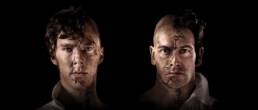
One of the few good things to come out of the coronavirus lockdown is a plethora of high-quality theatre, musicals and opera productions that are streamed for free by some of the most reputable arts venues in the world.
One such initiative came from the National Theatre, which has used its Youtube channel to stream some of the most memorable past theatre productions in the NT Live portfolio. Streaming a new play every Thursday at 7.00pm GMT, the productions are then available to watch on demand for seven days.
After kicking off their streaming programme on 2 April with Richard Bean’s ‘One Man Two Guvnors’, on 30 April came the turn of Danny Boyle’s critically acclaimed 2011 production of Mary Shelley’s iconic Gothic tale, Frankenstein. The play was streamed on two consecutive nights, highlighting stellar performances by Benedict Cumberbatch and Jonny Lee Miller who exchanged the roles of the Creature and Victor Frankenstein on each successive evening.
The writer, Nick Dear, and the director, Danny Boyle, moulded the play around the Creature’s point of view, stripping away the various thematic structures present in the book. They preserved a more linear form, choosing to focus on philosophical themes of existentialism, human tendencies and limitations. Perhaps a reflection of the Creature himself, whose sole desire in life is to be a good man and to have a mate to share his earthly existence with.
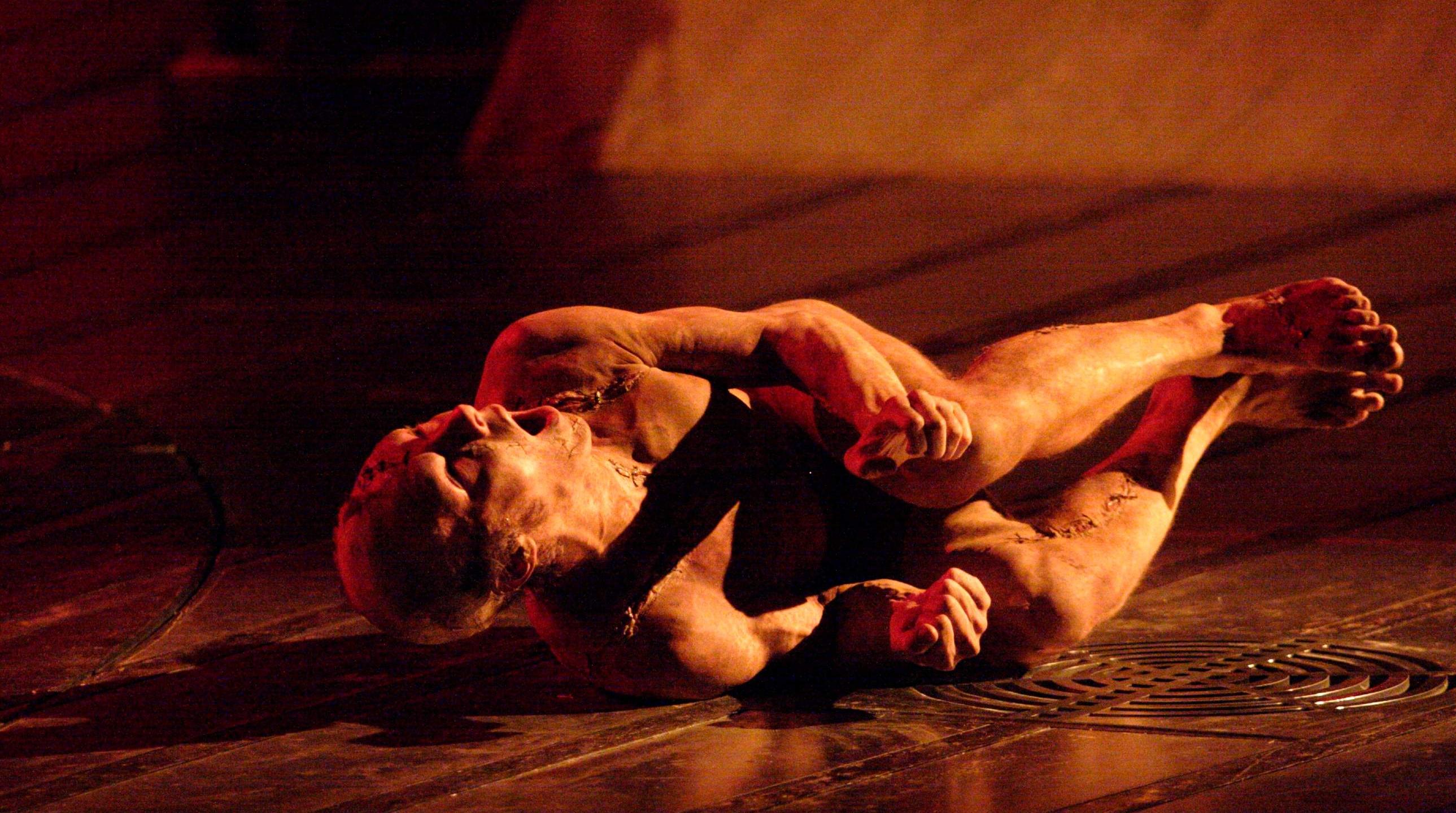 BENEDICT CUMBERBATCH AS THE CREATURE. © CATHERINE ASHMORE
BENEDICT CUMBERBATCH AS THE CREATURE. © CATHERINE ASHMORE
Notwithstanding the reduced size of the story, it is still quite difficult to fathom how such darkness managed to come out of the mind of an eighteen-year-old young woman, at a time when science was just beginning to make significant strides and when unspoken of gruesome experimentations would take place behind closed doors.
However, galvanism was indeed a popular topic at the time and it must have been difficult to ignore the increasing popularity of mortsafes, which were invented to prevent body snatchers from desecrating graves in exchanges for a few quid from anatomists who would always be looking for fresh cadavers for their scientific observations and experiments.
The play opens with the Creature coming out of a metaphorical womb made out of skin in Frankenstein’s quarters, under Bruno Poet’s a thousand suspended bulbs. As he stumbles and struggles to stand up and keep his balance, he is carefully discovering his physical capabilities. His moves and trajectories seem to have been accurately directed.
 SET LIGHTING BY BRUNO POET. © BRUNO POET
SET LIGHTING BY BRUNO POET. © BRUNO POET
The contrast in Cumberbatch’s and Miller’s interpretations of the Creature is swiftly becoming apparent. While Cumberbatch’s Creature makes us root for him as he is rediscovering the world with the innocence of a child, Miller’s rebirth is raw and animalistic, almost having us expect evil doings on his part.
We see the Creature enthuse as he observes the sun, the grass, the birds around him with great curiosity. Nothing seems to await him on his journey but pure discovery and wonder.
The industrial theme of the times is introduced onto the stage by means of a steampunk train full of workers, a décor detail masterfully put together by the production’s set designer, Mark Tildesley.
Doomed to be abhorred by everyone who would set eyes on him, the Creature is quickly introduced to the harsh reality of human cruelness, as he is abused mentally and physically at every step.
He does, however, experience kindness for a brief period of time, as he comes across blind old De Lacey in his path, whose condition doesn’t discriminate against the Creature’s rough appearance. Wonderfully and warmly portrayed by Karl Johnson, the old man welcomes the Creature into his home and over the course of a year educates him on all things philosophy, history and the four seasons.
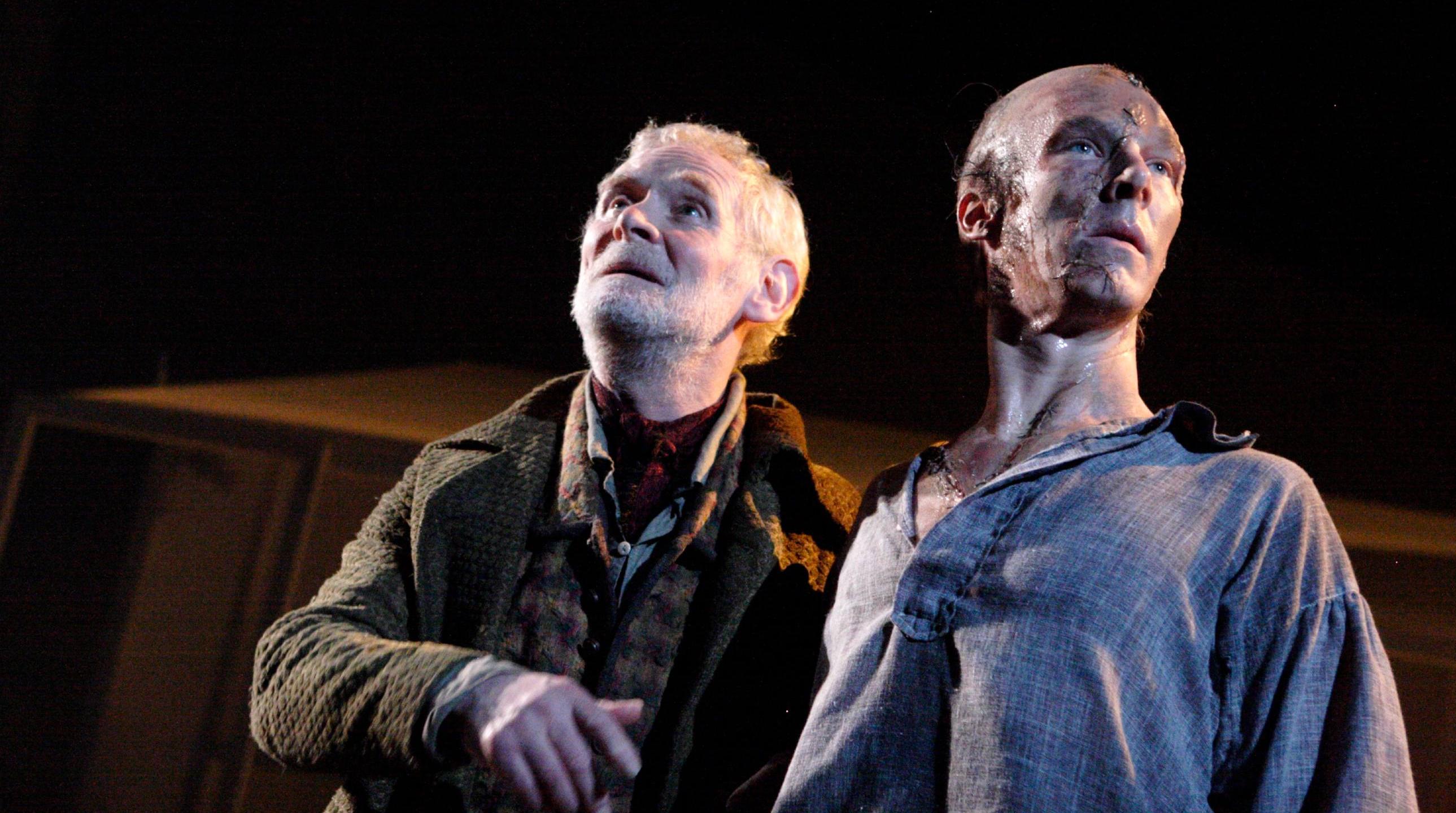 BENEDICT CUMBERBATCH AS THE CREATURE. © CATHERINE ASHMORE
BENEDICT CUMBERBATCH AS THE CREATURE. © CATHERINE ASHMORE
One key moment in the play is when De Lacey teaches the Creature about the original sin. He says, ‘There are two schools of thought: one says that we’re all made imperfect and require the assistance of a higher authority, a deity to overcome the sin of being born. The other school of thought, to which I subscribe, insists that when we leave the womb we are pure. That a babe in arms is untainted by sin, that evil is the product of social forces and that God has nothing to do with how a man turns out; be it good or be it bad.’
In other words, if the Creature is a monster, it is only because he is met with cruelty and discrimination again and again till his patience runs out and he is forced to exercise vengeance. A monster on the outside, society shapes him into a monster on the inside.
This second school of thought is perhaps a clever mechanism to raise a mirror to our own society and show how each of our actions can prompt even greater reactions, should we be careless.
The play is not all gloomy though. Between the Creature’s sarcastic remarks, Frankenstein’s cluelessness vis-à-vis mundane matters and De Lacey’s witty remarks, the creators have managed to sprinkle this dark tale with unexpected humorous bits.
The main protagonists’ clever role-switching further accentuates the question that nearly every reader of Mary Shelley’s book has asked themselves over the past two centuries: ‘Who is the man and who is the monster?’ Perhaps their distinct interpretations of the Creature reflect the two contrasting schools of thought: one is born pure and the other a sinner. Miller’s Creature seems to subscribe to the latter, while Cumberbatch’s to the former.
Upon meeting the old man’s family, he is once again abused, which prompts him to burn down their house and kill everyone, including his benefactor. The Creature flees to find Frankenstein, having found clues as to his whereabouts in the diary he stole when he fled the scientist’s home.
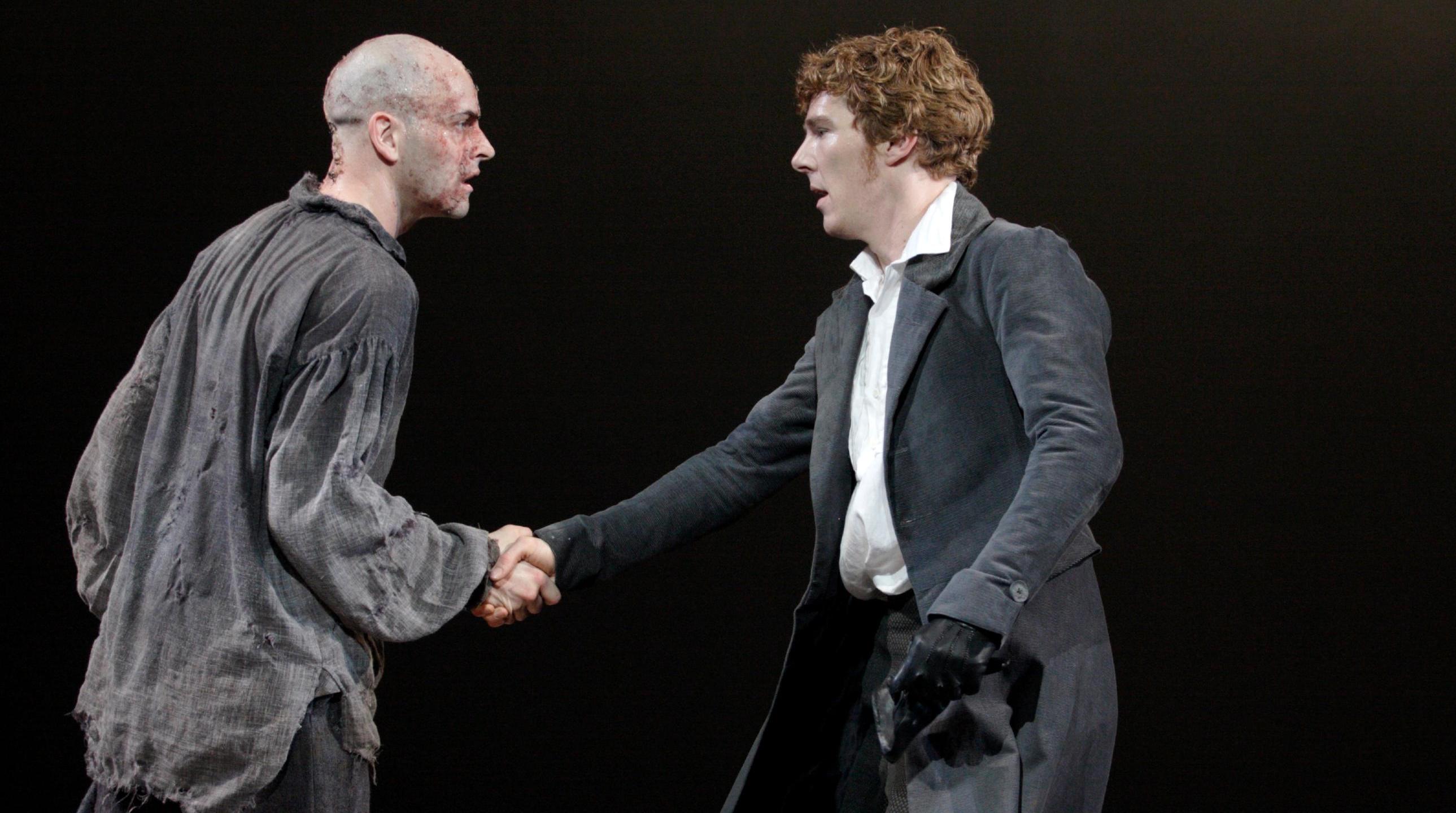 JONNY LEE MILLER AND BENEDICT CUMBERBATCH. © CATHERINE ASHMORE
JONNY LEE MILLER AND BENEDICT CUMBERBATCH. © CATHERINE ASHMORE
As he locates the Frankenstein family, the Creature’s twisted logic dictates that he murders William, Victor’s younger brother, in order to lure his mad maker to him. His plan works like a charm.
As Victor finds him, the Creature asks Frankenstein to build a mate for him, with the promise that once he does, the couple will leave Europe and no one will hear from them again.
Frankenstein obliges and travels to Scotland, leaving behind his patient betrothed Elizabeth (a most gentle Naomie Harris) and his father (a stern yet warm George Harris).
As Victor manages to construct a new creature, female in form this time, his firstborn is promptly besmitten with her and begs Frankenstein to bring her fully to life, explaining that he already loves her.
Another key moment is Victor’s reaction upon hearing the Creature’s detailed account of the physical symptoms of love. Both Frankenstein, and the audience, realise that the scientist himself is incapable of love, having spent his entire life obsessing over his work. He remarks that love is ‘anarchic, volatile, vertiginous, mad. Above all it is uncontrollable!’, perhaps also drawing a parallel between love and the Creature himself.
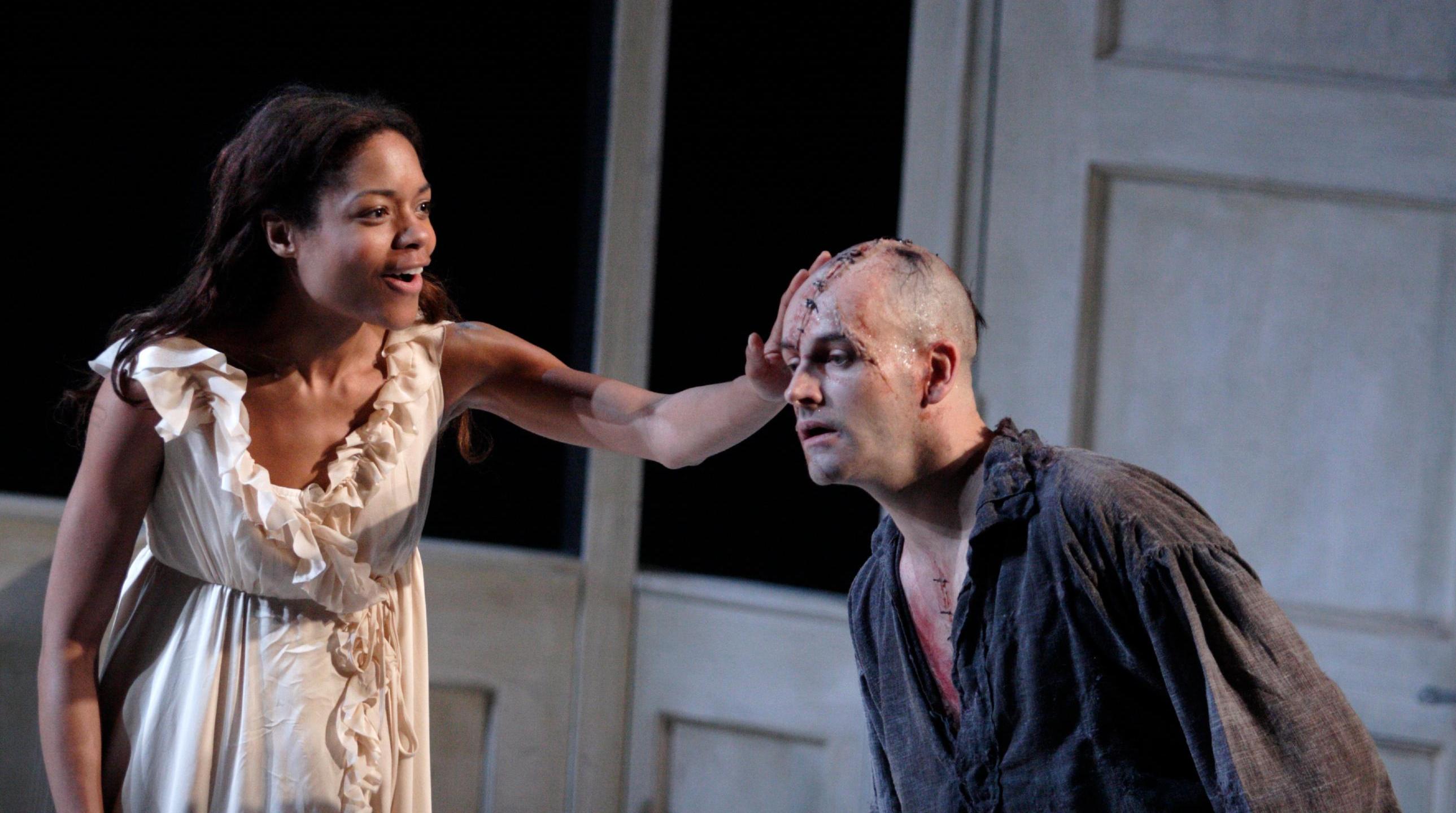 NAOMIE HARRIS AND JONNY LEE MILLER. © CATHERINE ASHMORE
NAOMIE HARRIS AND JONNY LEE MILLER. © CATHERINE ASHMORE
As the Creature starts to realize that he’s been tricked, Victor hacks the girl’s body, ensuring she would never see the light of day.
Mad with anger, the Creature flees the small hut, only to return a while later on Victor’s wedding day. Managing to avoid a paranoid Frankenstein, who had been expecting his vengeful reappearance ever since, he sneaks into the couple’s bedroom where he meets Elizabeth. She is only the second person to show him understanding and kindness. However, the Creature is only interested in revenge at this point and pays Frankenstein back with the same coin by abusing and murdering his new wife.
Victor Frankenstein leaves his home once more in pursuit of the Creature, following him across continents. When he finally catches up with his creation in the Arctic Circle, they realize they are bound to one another and disappear together into the icy darkness.
National Theatre’s weekly streams are free to watch. However, if you can, please consider supporting the theatre through the coronavirus crisis by donating at nationaltheatre.org.uk or text NTATHOME 10 to 70085 to give £10.
Stella Lungu
Stella is the Editor-in-Chief of The Cinematic Journal. She is also the Managing Director of Wolkh, a PR, Marketing and Branding agency specializing in Film, TV, Interactive Entertainment and Performing Arts.
An Interview with Anna Drubich
Anna Drubich is a Russian-born composer of both concert and film music, and has studied across…
A Conversation with Adam Janota Bzowski
Adam Janota Bzowski is a London-based composer and sound designer who has been working in film and…
Interview: Rebekka Karijord on the Process of Scoring Songs of Earth
Songs of Earth is Margreth Olin’s critically acclaimed nature documentary which is both an intimate…
Don't miss out
Cinematic stories delivered straight to your inbox.
Ridiculously Effective PR & Marketing
Wolkh is a full-service creative agency specialising in PR, Marketing and Branding for Film, TV, Interactive Entertainment and Performing Arts.


